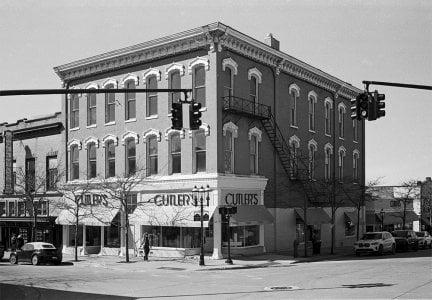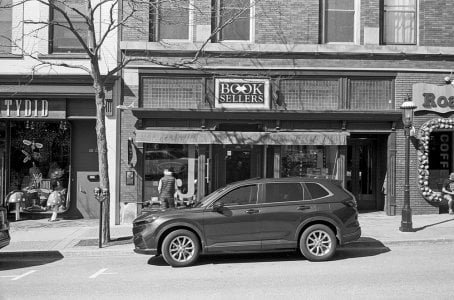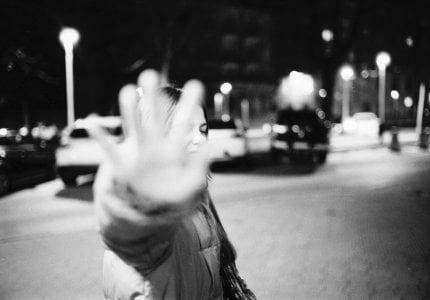Mos6502
Well-known
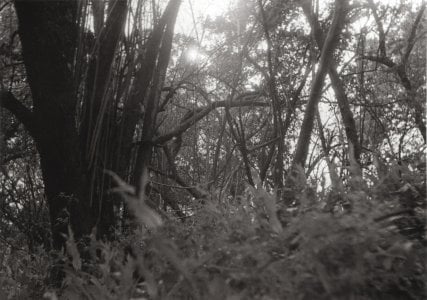
I developed and made some quick and dirty prints from a roll of Ferrania's new P33 film.
All shots were made on an overcast day, in shade, so lighting is as flat as possibly could be. No filter used because I wanted to see how the film responded. Developed in D-76, for time/temp specified on Ferrania's website.
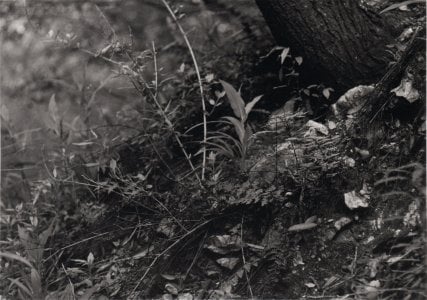
The first thing that I noticed about this film is that it has B&H sprocket holes. It would not load into my Exakta VX 500, which is a camera very sensitive to the dimensions of the film used, the advance sprocket would not grip this film at all. This seems a bit odd to me. I have not used the P30 film yet, so don't know if all the Ferrania films use cine sprocket holes. The other thing I noticed is that film behaves as though it doesn't have an anti-halation coating. In the top photo, that flare in the backlit trees bleeds well past the edges of the film gate and into the sprocket area, so it's definitely halation and not lens flare.
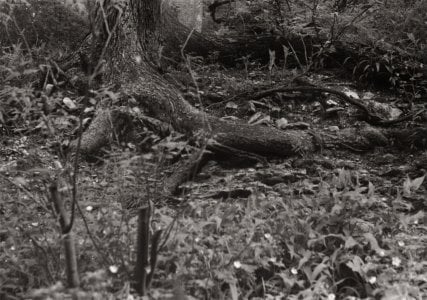
Despite those issues, the film does have some nice qualities. It has essentially no perceptible grain, and appears to have plenty of latitude, and despite warnings of high contrast and crushed shadows I've seen given for the other Ferrania films, this film doesn't appear to suffer the same fault. The prints here were all made with the same contrast and exposure, so no doubt even more detail could be got from the deepest shadows with a little more effort. At 160 ASA, it's a medium speed film that gives just a bit more sensitivity that could be useful for the habitual filter user, without having to step up to a 400 ASA film. My first impression is largely favorable. I don't know why it has cine sprocket holes, and while this may not cause a problem for 99% of still cameras, it still seems odd to me. The halation issue is not a deal breaker for me, but I am scratching my head over it. I know that for their last two films Ferrania has been pushing the angle that these are old fashion emulsions that give an old fashioned look, but I feel like P33 would be better if they left that gimmick behind. That sort of thing is ok on a $5.50 roll of Kentmere, but it's not something I want to pay $12 for. If the halation issue were fixed I think P33 would go from being a film that is merely "interesting" to one that's excellent. And for the price they're asking, that's really what should be done.
jbielikowski
Jan Bielikowski
(...) If the halation issue were fixed I think P33 would go from being a film that is merely "interesting" to one that's excellent. And for the price they're asking, that's really what should be done.
Your samples are much nicer than what I saw before, and I love those halations really. Too bad it's sold out everywhere in EU.
Mackinaw
Think Different
I have five rolls in the fridge, Just waiting for some better weather before I shoot a roll.
Jim B.
Jim B.
Mos6502
Well-known
Now even more perplexed. Opened a box of P30 and see it has normal sprocket holes. So why would P33 have cine sprocket holes? Very strange.
Freakscene
Obscure member
New or different hardware to finish the film into 135.Now even more perplexed. Opened a box of P30 and see it has normal sprocket holes. So why would P33 have cine sprocket holes? Very strange.
Bell and Howell sprockets used to give my Nikon F3 fits - with the MD4 it used to just shred the film.
If anyone who wet prints has any P33 I’m interested to know if it develops to a curve that can be printed normally (the P30 I used did not develop to a normal curve and is between very difficult and impossible to wet print as a result).
Marty
Erik van Straten
Mentor
What do you mean with "printed normally"?New or different hardware to finish the film into 135.
Bell and Howell sprockets used to give my Nikon F3 fits - with the MD4 it used to just shred the film.
If anyone who wet prints has any P33 I’m interested to know if it develops to a curve that can be printed normally (the P30 I used did not develop to a normal curve and is between very difficult and impossible to wet print as a result).
Marty
Freakscene
Obscure member
What do you mean with "printed normally"?
Printed on regular silver gelatin paper for printing black and white photos. To do this you need film that can be developed to Ğ0.18-1.70 in the 0.55-0.65 range and without marked departure from density linearity in the 1.0-3.0 millilux seconds range.
This has nothing to do with single exposure vs split filter printing. It is about whether the exposure-density curve can be matched to that of papers. For the P30 that I tried it was virtually impossible, because the exposure-density curve of the P30 was markedly non-linear.
When I queried Ferrania about it, they simply said that I should scan the film.
Erik van Straten
Mentor
Strange that they try to sell useless paper.
Last edited:
Freakscene
Obscure member
It’s film. That it still sells despite not being normally printable indicates that customers who wet print account for only a small proportion of film sales. A vast majority of film photographers in 2024 scan, and if they print, they print from a digital file.Strange that the try to sell useless paper.
Erik van Straten
Mentor
It is extremely difficult to get a Focomat IIc, but they are still made by Kienzle. Paper is made by Ilford.It’s film. That it still sells despite not being normally printable indicates that customers who wet print account for only a small proportion of film sales. A vast majority of film photographers in 2024 scan, and if they print, they print from a digital file.
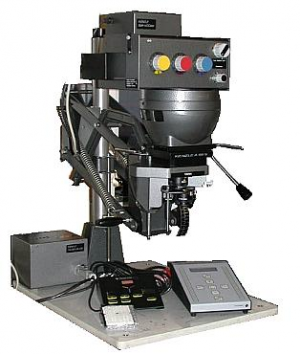
Last edited:
Mos6502
Well-known
These are wet prints. Printed on Fomabrom VC FB. The negatives were slightly thin, but did not present any real difficulties. Indeed I only did a test strip for one, and the others were printed the exact same. They could be better but I didn't have the time, and just wanted to get an idea of what the results would be like.New or different hardware to finish the film into 135.
Bell and Howell sprockets used to give my Nikon F3 fits - with the MD4 it used to just shred the film.
If anyone who wet prints has any P33 I’m interested to know if it develops to a curve that can be printed normally (the P30 I used did not develop to a normal curve and is between very difficult and impossible to wet print as a result).
Marty
Also shot a test roll of Ferrania Orto. Was a little underexposed, but that was my fault for trying to finish a roll while the light was fading. Printed ok with split filtering. Haven't had a chance to give it a proper test yet.
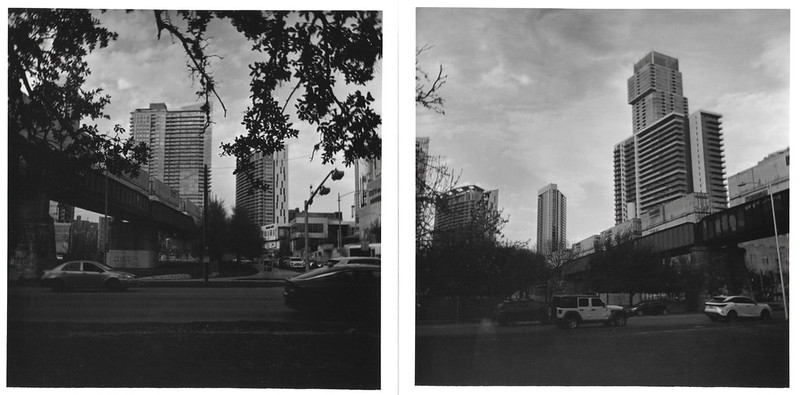 Ferrania Orto Trial by Berang Berang, on Flickr
Ferrania Orto Trial by Berang Berang, on FlickrFreakscene
Obscure member
I have 2 Leica Focomat IIcs Erik, one with a VC module, and a giant pile of Ilford paper. I understand these basics, but P30 was not formulated to print.It is extremely difficult to get a Focomat IIc, but they are still made by Kienzle. Paper is made by Ilford.
View attachment 4834947
Cascadilla
Well-known
About the sprocket holes in 35 mm film--when I was working for s documentary film crew while I was in college almost 50 years ago, I remember glancing through a book (50 pages or so) of ANSI standards for sprocket holes for various types of sprocket holes for 35 mm and 16 mm film, depending on what the particular use was. There were minor but significant differences depending on whether the film was destined for a movie camera, an optical printer, an optical sound master or a projection print. And there were a lot of them!
Mos6502
Well-known
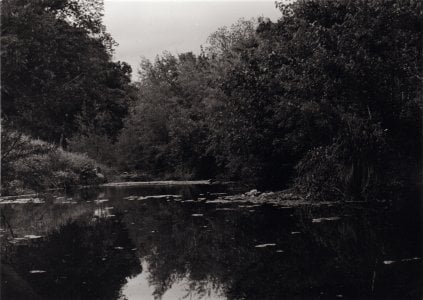
I developed my 2nd roll of this film. The results are ok. Don't look too hard at the sharpness, these were printed using an old 1960's mini enlarger that I purchased for decoration, but was curious to test and see if it works. It has what is probably a pretty terrible triplet enlarging lens.
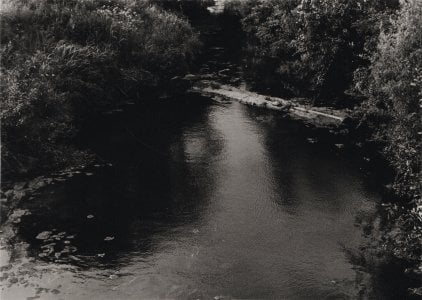
After scanning I only set the levels to where black and white points are, did not adjust and middle values for contrast. Both images were made with a #2 contrast filter. I'm going to revisit the bottom photo on my usual enlarger to make a crop of the image and it will be interesting to see how that looks. I did not experience any noticable halation on this roll, but also did not have any backlit scenes.
Bingley
Mentor
Thank you for starting this thread. I've been looking closely at P33, and have now purchased three rolls. What developer are you using? The Ferrania tech sheet, such as it is, only recommends development in Rodinal, D76, and Bellini ECO. None of those are my usual go to developers, but I ordered some D76 and will give it a try. I'm intrigued by the fine grain... I read a comment somewhere that compared P33 to Plus-X; Plus-X was one of my all time favorite films and I still have some in the fridge. It would be interesting to see what P33 looks like when developed in HC 110, Perceptol, or DDX.
Mos6502
Well-known
These have all been in D76 1:1 dilution.
Mackinaw
Think Different
I finally had the chance to shoot a roll of P33. I just put new light seals on an old Canonet, and figured this would be a good way to test camera and film. I shot the roll at box speed, or EI 160, and developed in Xtol 1+1, 10 minutes at 68F. General observations: this is a true 160 speed film, it doesn't have the extreme contrast of P30, and is very fine grained. These pics were taken on a bright, sunny, harsh lighting day. The next roll I shoot will be on a cloudy day. This new film has potential.
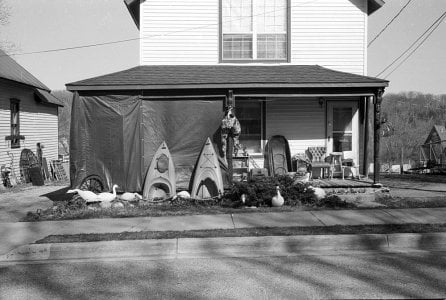
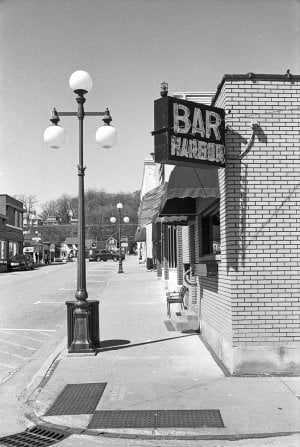
Jim B.


Jim B.
Mos6502
Well-known
I revisited the above photo with the heron and turtles, and mades prints with a #2, #2.5, and #3 filter. 2 gave too little contrast, 3 gave a little too much (for my taste). For that matter 2.5 was still a little contrasty, but the result was pleasing enough.
 creek by Berang Berang, on Flickr
creek by Berang Berang, on Flickr
Slight crop to tighten up the shot, still grain barely noticeable.
 creek by Berang Berang, on Flickr
creek by Berang Berang, on FlickrSlight crop to tighten up the shot, still grain barely noticeable.
Share:
-
This site uses cookies to help personalise content, tailor your experience and to keep you logged in if you register.
By continuing to use this site, you are consenting to our use of cookies.


